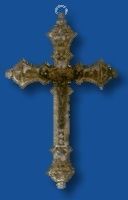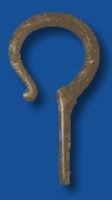A bishop, from the Greek word episkopos (overseer), is a direct successor to the apostles. Bishops have, by divine institution, taken the place of the apostles as pastors of the church. The ordination and installation of Bishop Gerald M. Barbarito as the fifth bishop of Palm Beach Diocese focuses a spotlight on symbols of a bishop. In fact, the bishop himself is a symbol and is surrounded by symbols. Let us look at some of them.

The Bishop's Chair
In ancient times, a chair was a sign of authority to teach. The bishop's chair is called a cathedra from the Latin word for chair and it is the presence of the bishop's cathedra in a church that makes it a cathedral. The bishop's chair, then is a symbol of the bishop's teaching office and pastoral power in his diocese. It is also a sign of the unity of believers in the faith that the bishop proclaims as shepherd of the Lord's flock.

Coat of Arms
A bishop's coat of arms is distinguished by a sign of his rank. That sign, placed over the shield, is a particular version of an ecclesiastical hat that was worn in processions, as late as 1870. The hat is low-crowned, flat, and widebrimmed. On a bishop's coat of arms, the hat is green and hanging from it are 12 green tassels, six on each side. There's also a processional cross above the shield. The cross on a bishop's coat of arms has one bar; an archbishop's cross has two. The design of the shield itself differs from bishop to bishop.

Miter
The miter is the proper liturgical headdress for all bishops of the Latin rite, including the pope. The word comes from the Greek word mitra, meaning "turban." It consists of two stiffened flaps of material joined by a headband with two fringed strips hanging from the back base of the miter. The miter as we know it today developed from the conical head-covering worn by the pope that appeared in the tenth century. At first, it was only used by the pope.

Pectoral Cross
The pectoral cross gets its name because it is worn over the breast, or pectus, hanging from a green cord intertwined with gold threads. There are rules determining whether it is worn over or under whatever the bishop is wearing. If he's in a suit and collar, the pectoral cross is usually placed in the vest pocket with the chain showing.

Crozier
The crozier is a pastoral staff that is conferred on bishops (and abbots) at their installation. In the West, the top of the staff is curved to remind the bishop of the shepherd's crook and of his pastoral care of the people entrusted to him. It is a sign of the bishop's need to keep watch over his whole flock, sustaining the weak and faltering, confirming the wavering faith, and leading back the erring ones into the true fold.

Ring
The bishop's ring is a symbol of the bishop's fidelity to and nuptial bond with the church, his spouse. It signifies the bishop's symbolic marriage to the church or Christ. The bishop's ring is usually made of gold with an amethyst. The bishop's ring was first mentioned as an official part of the bishop's insignia in the early seventh century.

Zucchetto
The zucchetto is a skullcap worn, particularly by prelates, since the thirteenth century. The pope wears a white zucchetto; cardinals, a red zucchetto; and bishops, a purple zucchetto. Everyone else wears black.

